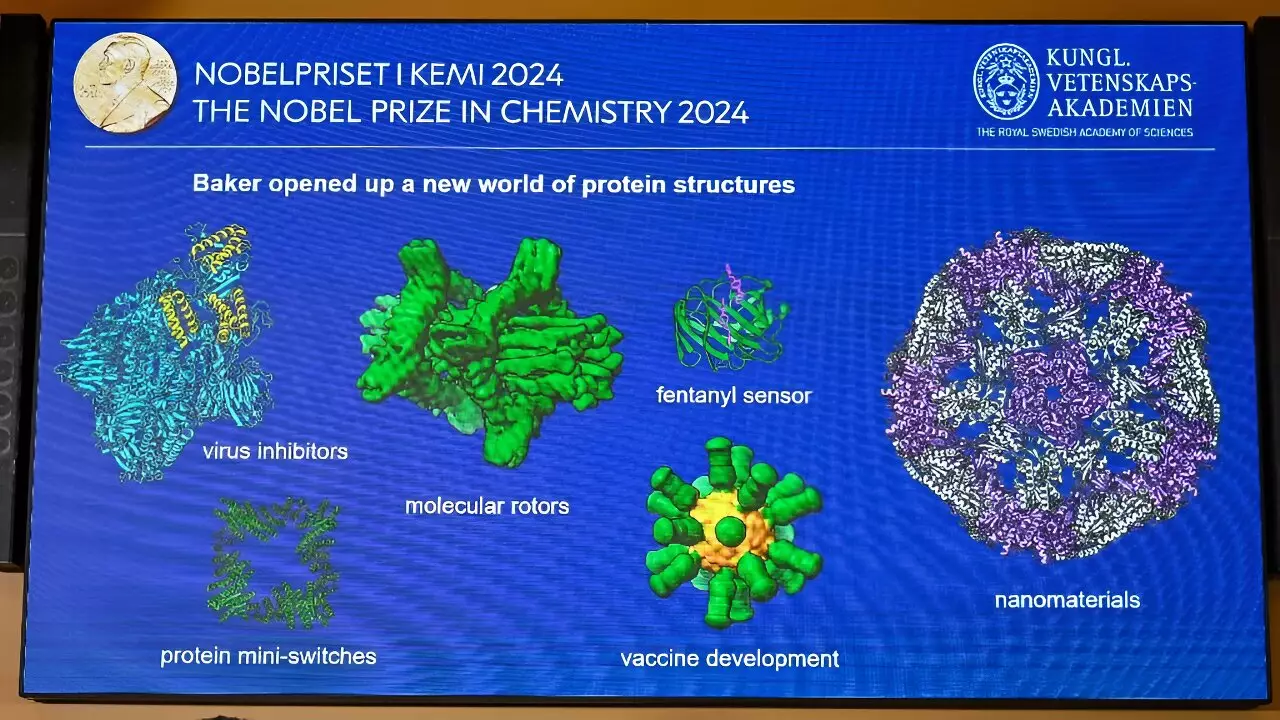The 2024 Nobel Prize in Chemistry heralds a groundbreaking advancement in our understanding of proteins, the fundamental building blocks of life. This year, the prestigious award was bestowed upon three distinguished scientists: Demis Hassabis and John Jumper from Google’s DeepMind, alongside biochemist David Baker. Their innovative research employs artificial intelligence to unravel intricate protein structures, providing insight that could revolutionize fields ranging from drug development to environmental science. This pivotal achievement marks a significant milestone in biochemistry, highlighting the potential that these molecular machines hold in addressing some of humanity’s most pressing challenges.
Proteins are often described as the workhorses of the cell, responsible for a myriad of functions essential to life. As outlined by experts, proteins play a pivotal role in converting DNA’s genetic information into functional entities—be it a neuron in the brain or a muscle fiber. These macromolecules consist of chains formed from 20 different amino acids, with the sequence in which these amino acids are arranged determining their eventual 3D conformation. Understanding the relationship between amino acid sequences and their corresponding structures is crucial for manipulating proteins to perform new tasks.
One analogy likened this transformation to an old telephone cord: while the cord may lie flat when stretched out, when released, it resumes its coiled shape, demonstrating the complexity of protein folding. This essential knowledge underpins the efforts of scientists who seek to engineer proteins with novel functionalities, opening up endless possibilities for innovation in medicine and environmental sustainability.
Historically, the quest to predict protein structures from amino acid sequences has proven a formidable challenge. Traditional methodologies often fell short, leading to the creation of competitions such as the “Protein Olympics,” where researchers across the globe struggled to accurately hypothesize the structures of proteins. Enter Demis Hassabis and John Jumper, who leveraged cutting-edge artificial intelligence through their revolutionary model, AlphaFold.
AlphaFold utilizes a machine learning approach, trained on a vast dataset comprising known protein sequences and their three-dimensional counterparts. By analyzing patterns and similarities, the model can predict the structure of previously uncharacterized proteins. Following its introduction, AlphaFold2 dramatically outperformed all other methods in the 2020 Protein Olympics, earning it accolades and solidifying its place as a transformative tool in structural biology. Its ability to forecast nearly all known protein structures on Earth has profound implications for science, allowing researchers to access invaluable data in a fraction of the time previously required.
While Hassabis and Jumper were focused on prediction, David Baker approached protein science from a different angle: engineering entirely new proteins. By employing a sophisticated computational program called Rosetta, Baker could not only envision novel protein structures but also deduce the sequences of amino acids required to construct them. Rosetta achieves this by combing through existing protein structures, identifying short fragments that bear resemblance to the desired design, and systematically altering them to propose a plausible sequence.
Baker’s pioneering work exemplifies how AI, combined with traditional biochemistry, can yield remarkable new creations. The implications are profound; such advances in protein design could lead to the development of targeted therapeutics, new vaccines, and materials engineered for environmental restoration.
The triumph of these scientists signifies the dawn of a new age in biotechnology. As outlined by the Nobel Committee, mastering protein engineering enhances our understanding of biological processes, paving the way for novel solutions to arise targeted at diseases, antibiotic resistance, and even plastic degradation. The potential to fabricate proteins with precise functions could well transform industries ranging from healthcare to renewable energy.
Baker expressed excitement over the potential applications of his research, particularly highlighting a protein designed during the COVID-19 pandemic intended to protect against viral infections. This innovative vision aligns with the global call for preventive healthcare strategies, demonstrating how science can address urgent public health dilemmas.
The contributions of Hassabis, Jumper, and Baker represent more than just scientific excellence; they pave the way for a future where proteins can be custom-engineered to meet humanity’s diverse needs. The transformative power of their work suggests we are only beginning to scratch the surface of what is possible in biochemistry. As researchers continue to explore the intersections of AI and protein science, we can expect future breakthroughs that will not only deepen our understanding of life at a molecular level but may ultimately enhance our quality of life itself.


Leave a Reply